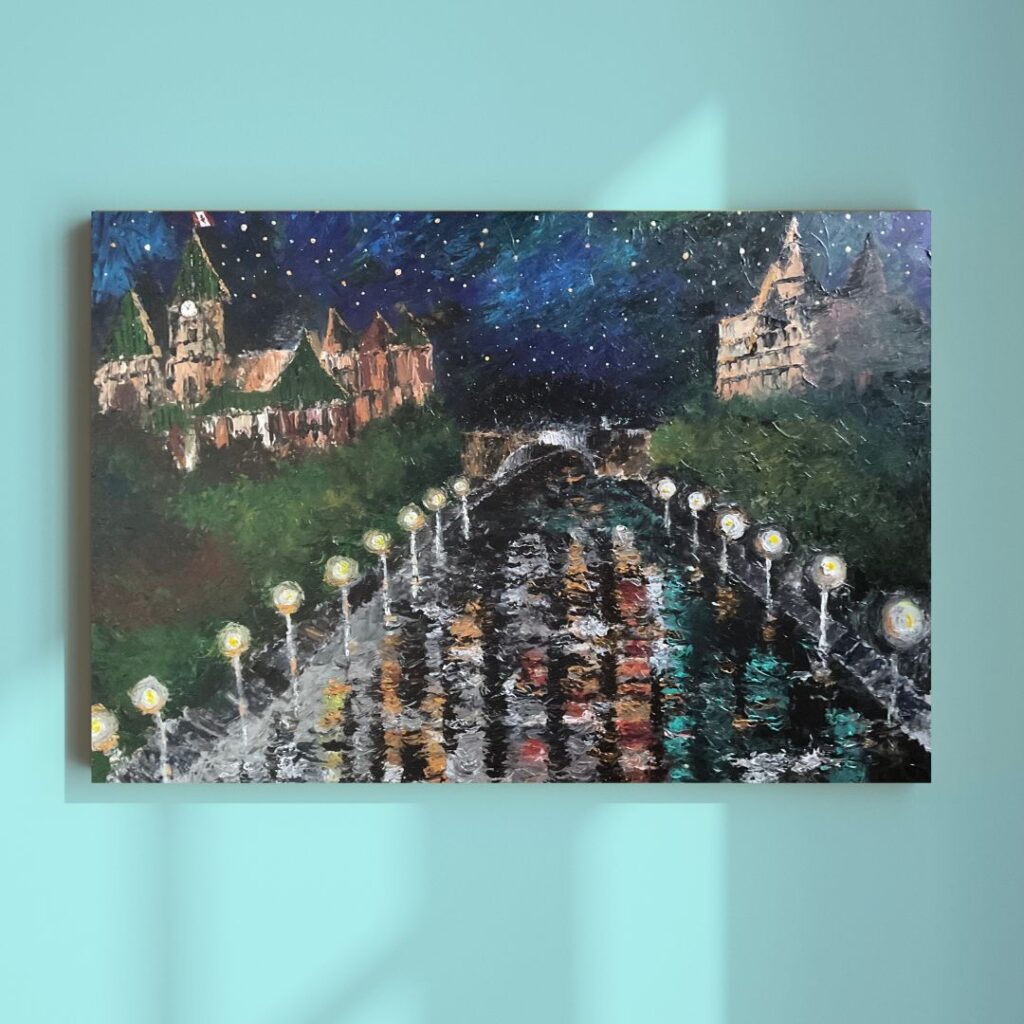
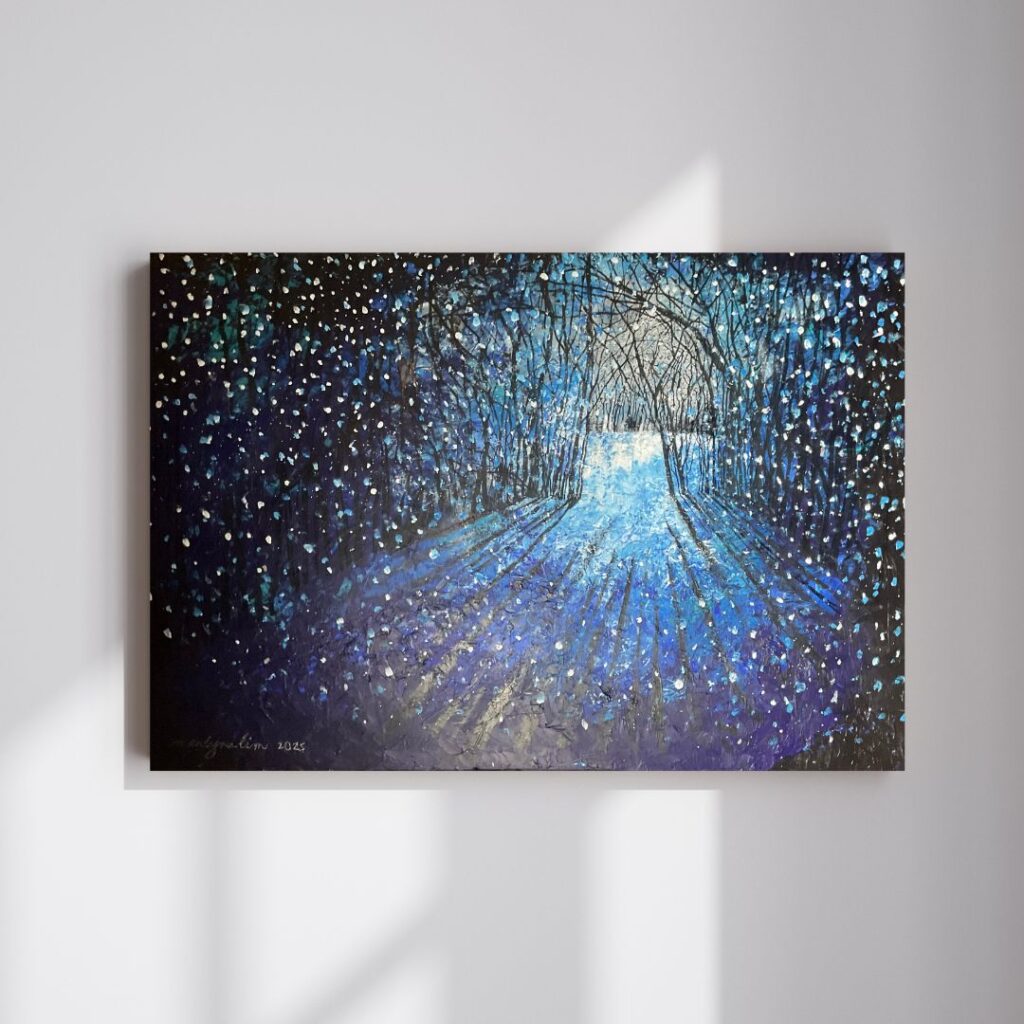
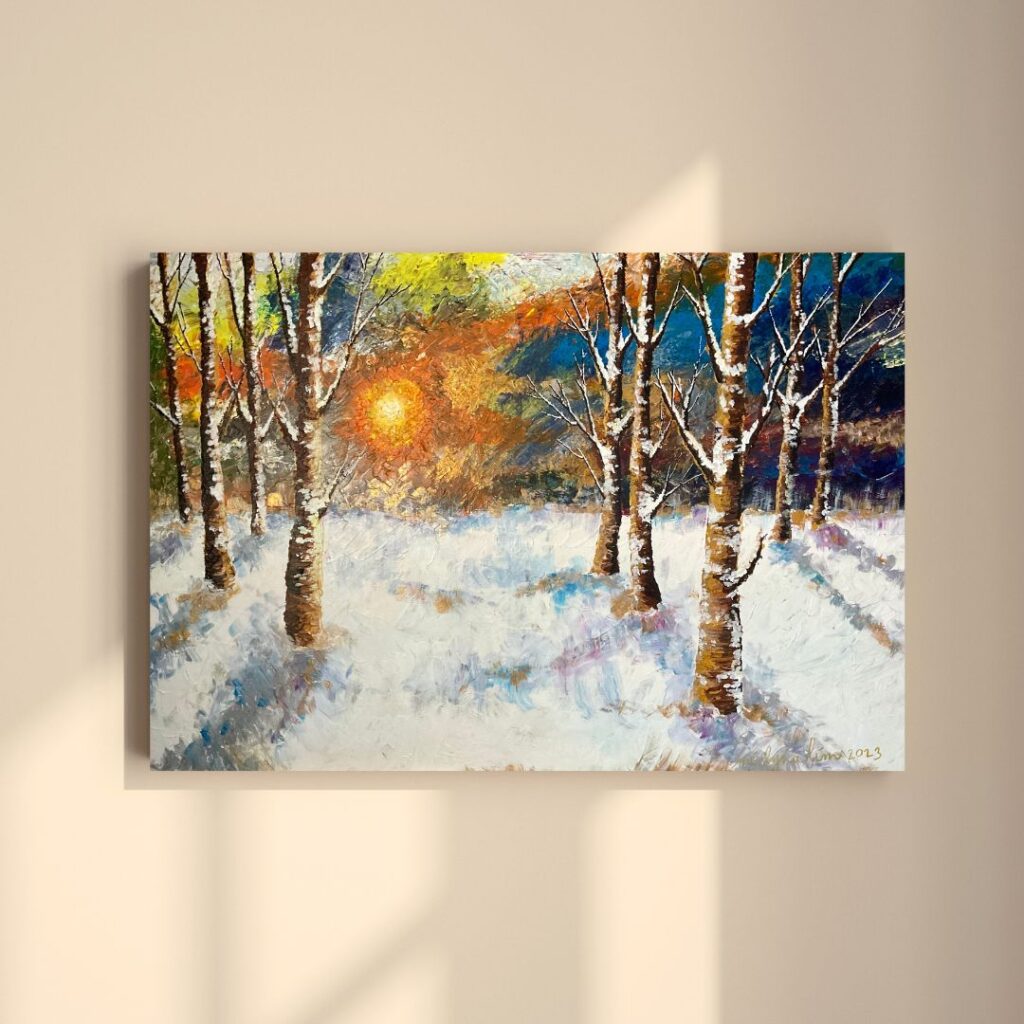

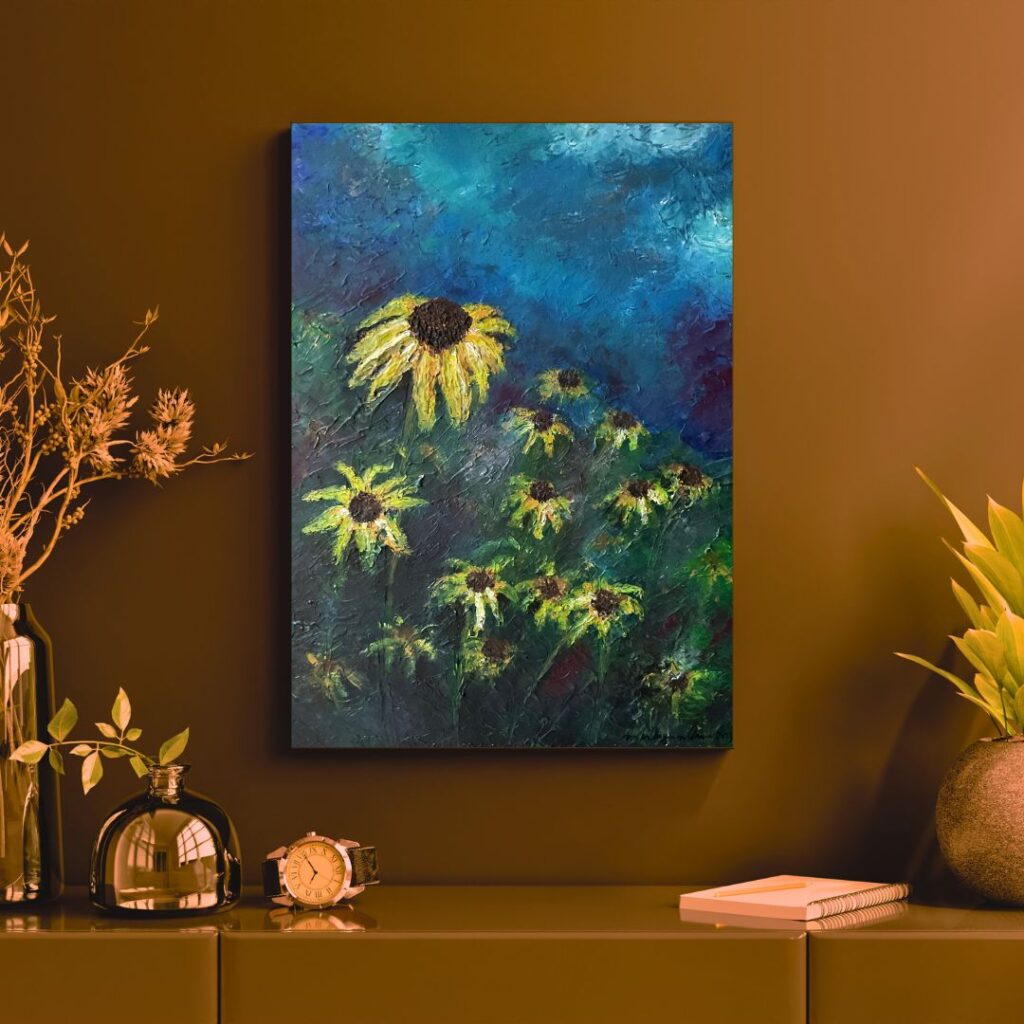
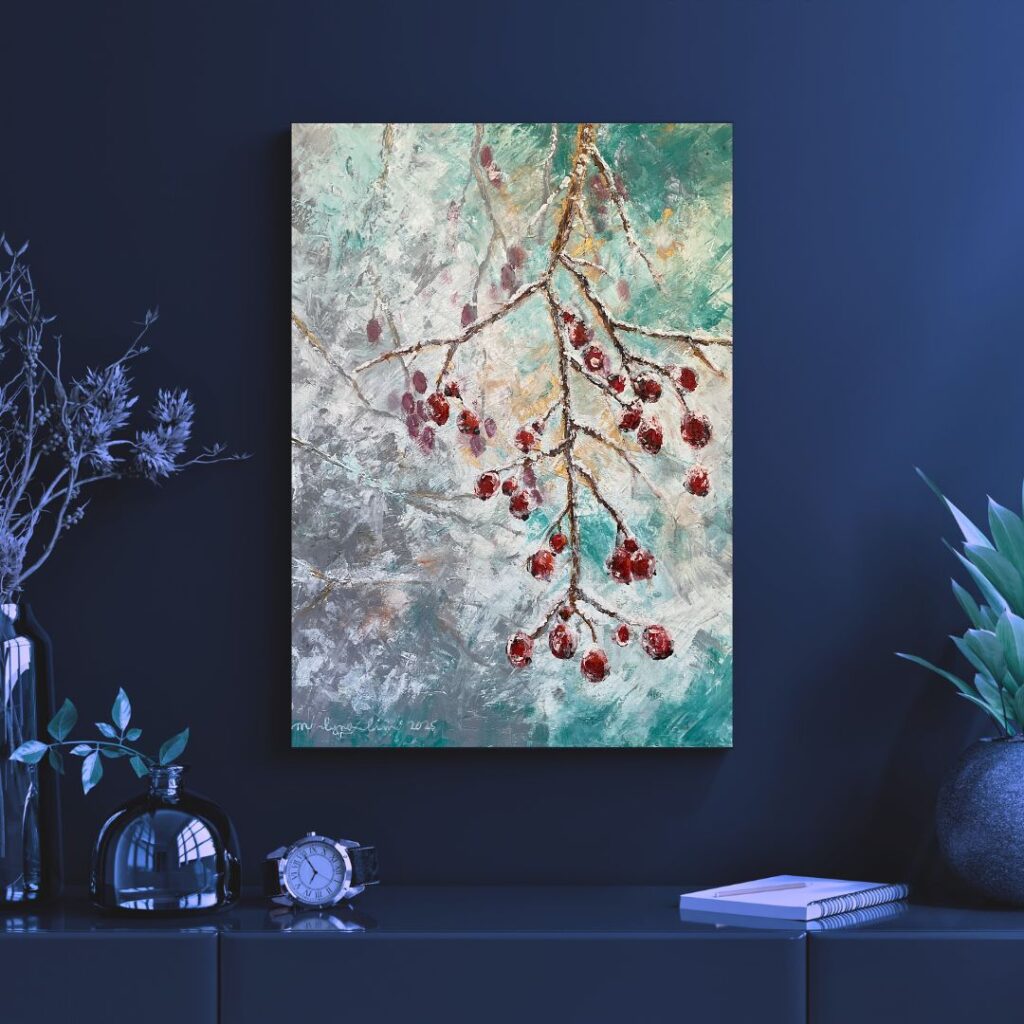

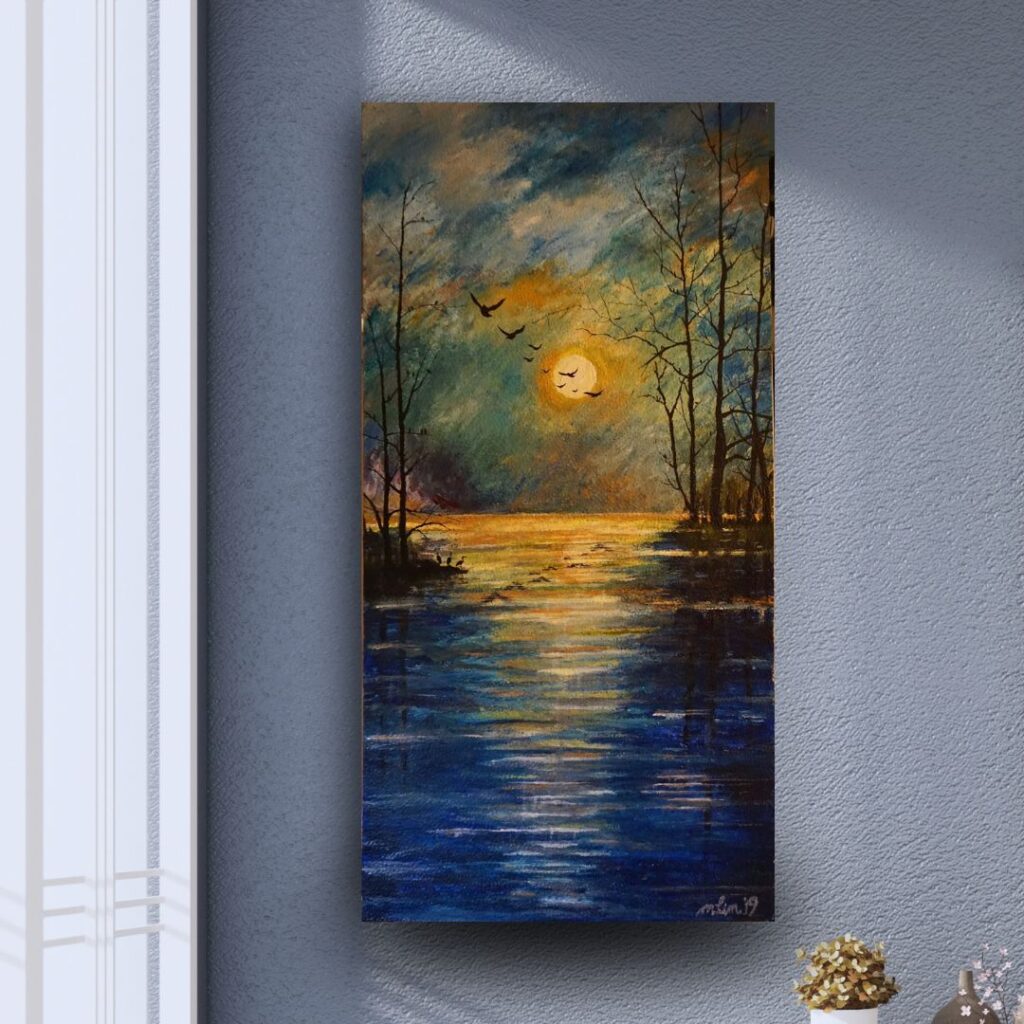
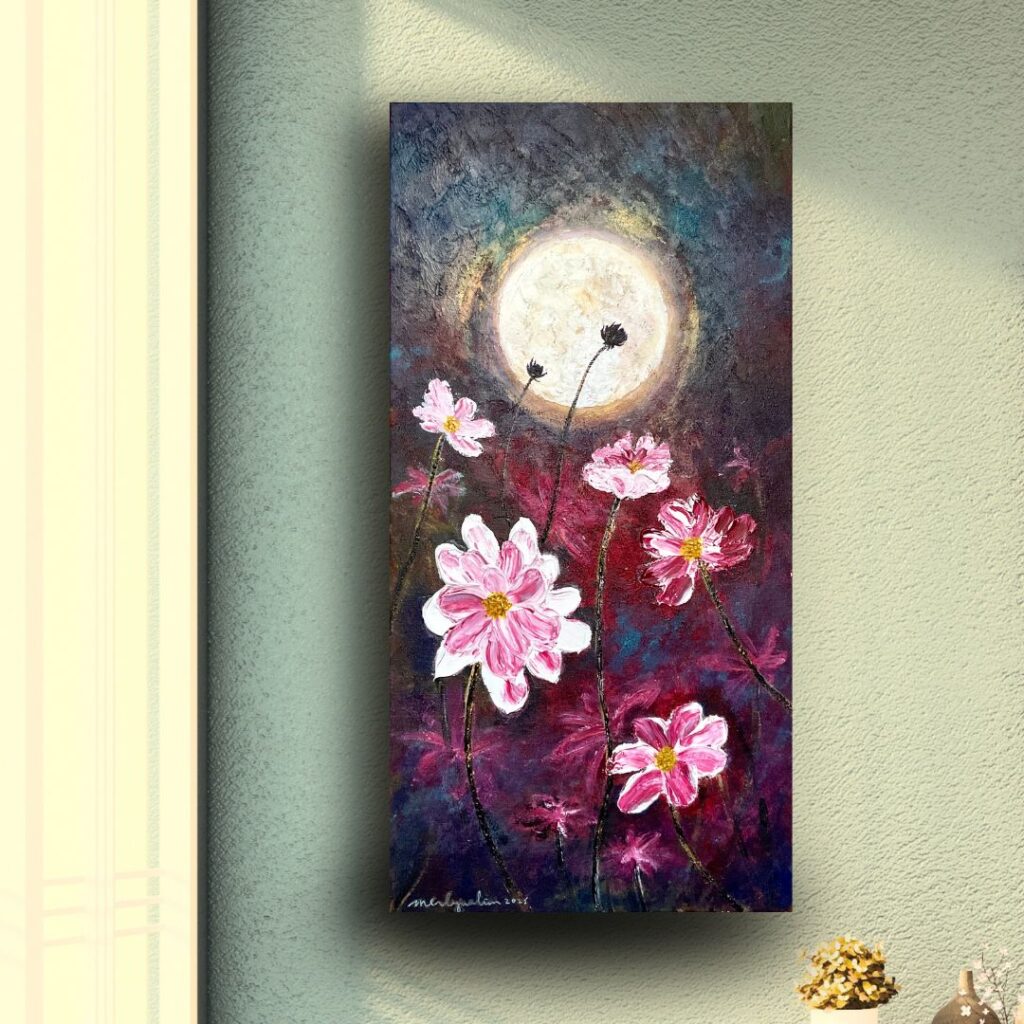
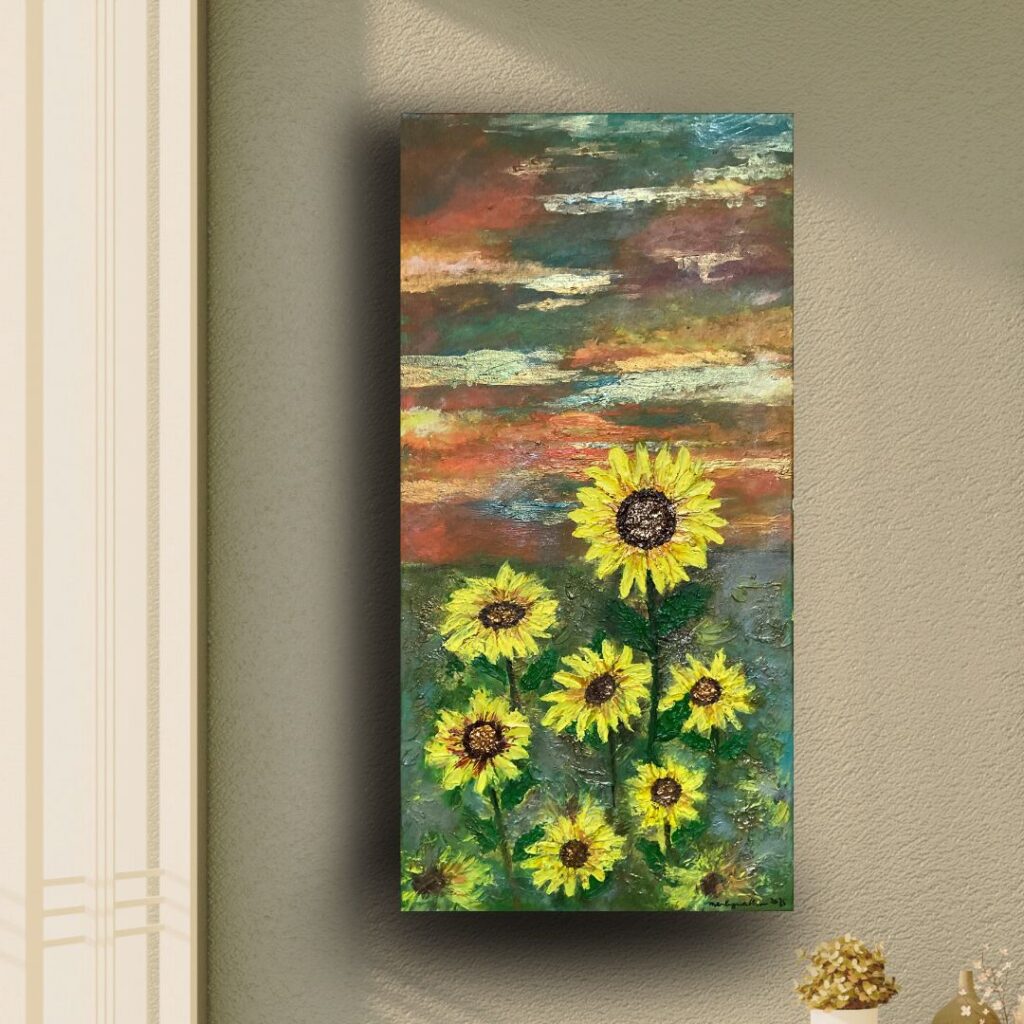
#MusicArt: Seeing Music, Hearing Nature
For decades, I kept myself away from painting nature. I believed I wasn’t good at it, so I turned my eyes—and my hands—toward buildings, architecture, and cityscapes. Lines and structures felt safer, as if I could rely on their certainty. Nature, in contrast, seemed beyond me, destined to remain untouched by my brush.
Then, almost by chance, I submitted an application for a juried exhibition of tile paintings at the Ottawa Heart Institute. I didn’t do it out of confidence but out of gratitude—the winning works would be placed above the beds of heart patients, and I wanted to give something back to the place that had once saved my life. To my surprise, I was selected.
There was only one condition: I had to paint nature. For the first time, with an unfamiliar medium—acrylic—I painted with my fingers, as I couldn’t yet hold brushes after a car accident that affected the fine motor control of my right hand.
What I had feared would be impossible turned out to be a revelation. As I painted, I discovered I could see and shape nature in ways I never imagined. The very subject I had avoided became one that fills me with deep emotion—sometimes a spark of joy, sometimes something more sentimental.
Today, when I work with acrylics, it is nature I return to again and again. My once-forbidden subject has quietly become my favourite companion. Interestingly, I also found ways to intertwine it with music. My first acrylic painting, Moonwake, inspired a very short piano accompaniment. Why or how? I’m not sure—it simply happened.
For my second painting, I still avoided brushes, but this time I experimented with palette knives, encouraged by my friend and artist Rivi. I quite enjoyed the technique, and Nocturnal Reflections was born. After completing the painting, I felt compelled to compose a short etude for it. I remember staring at the reflections, seeing the notes flying in my mind. I ran to the piano, and Etude in E Minor emerged.
The latter pairs in the #MusicArt series, however, rarely began with painting. I would often imagine music and painting together, inseparable in my mind, though somehow the music usually emerged first. Perhaps it is because composing at the piano feels like a moody endeavour, steeped in shifting light and weather. The seasons weigh heavily on me; I am often carried by seasonal blues, and so melodies arrive before brushstrokes. Temperature, the sky’s colours, the length of a shadow—all find their way into the compositions. At times, the painting followed not the actual season but the music’s seasonal mood. And sometimes I abandoned a planned piece altogether, painting freely instead, then letting the music come after.
My process is dialectical. It’s about ear and heart, probably. As a self-taught artist and musician, I don’t overthink. I see notations, I see images. I paint. I compose. And that, for me, is enough.
